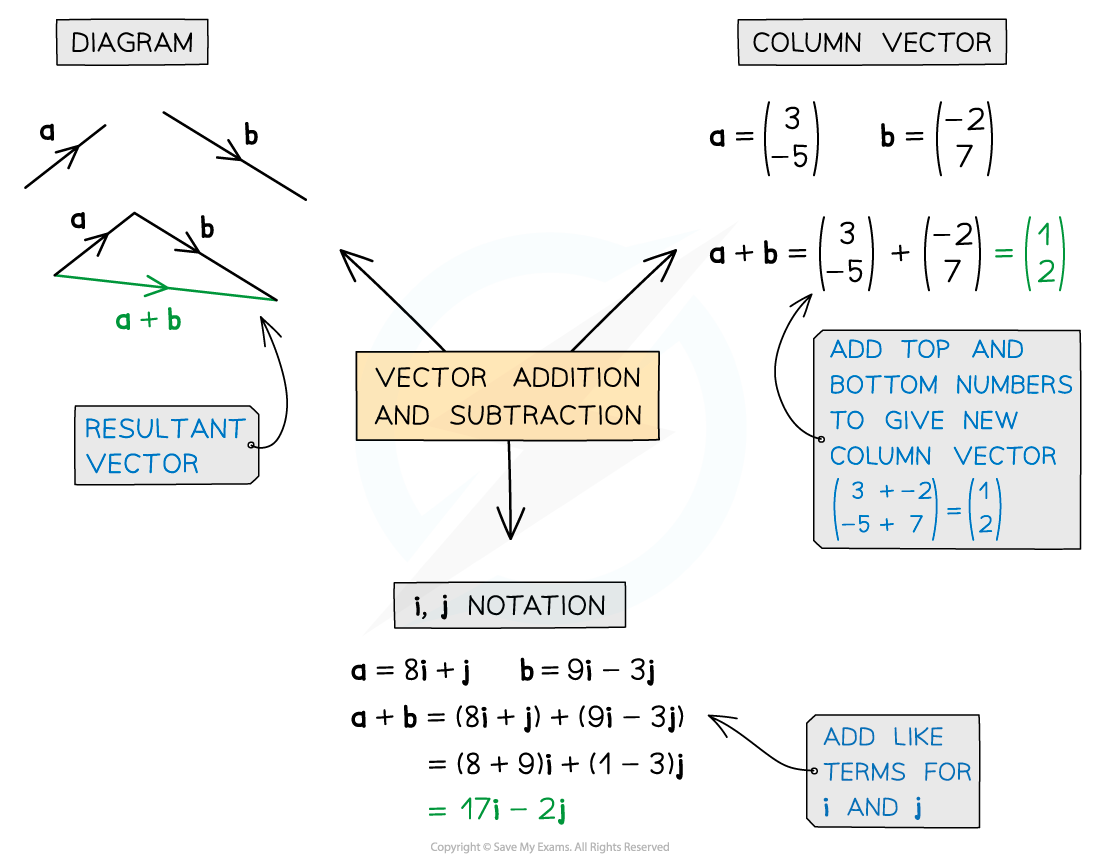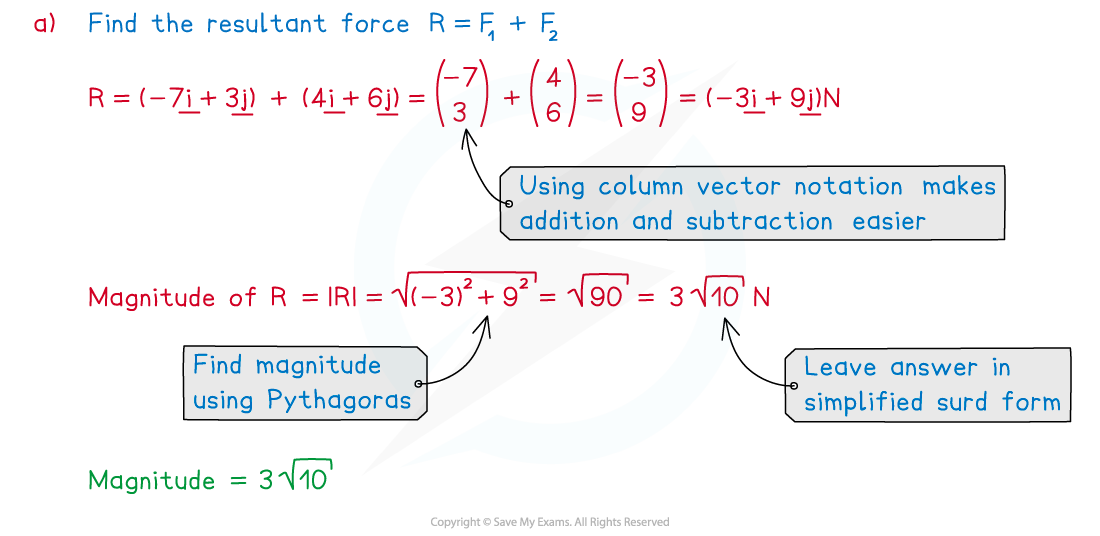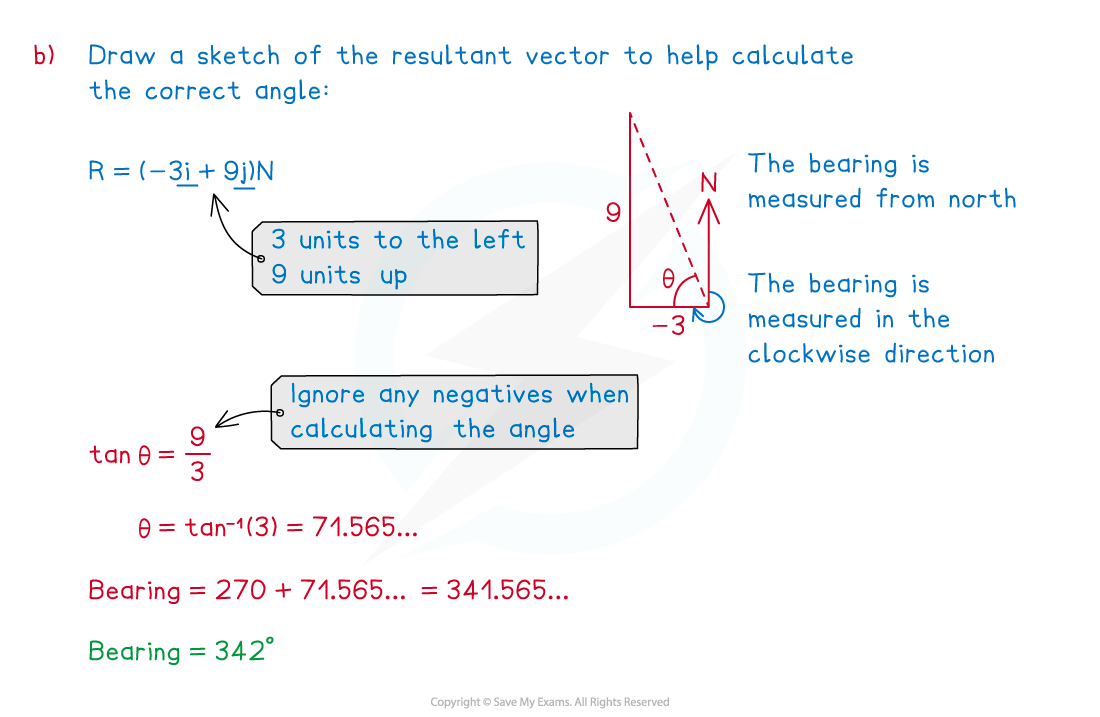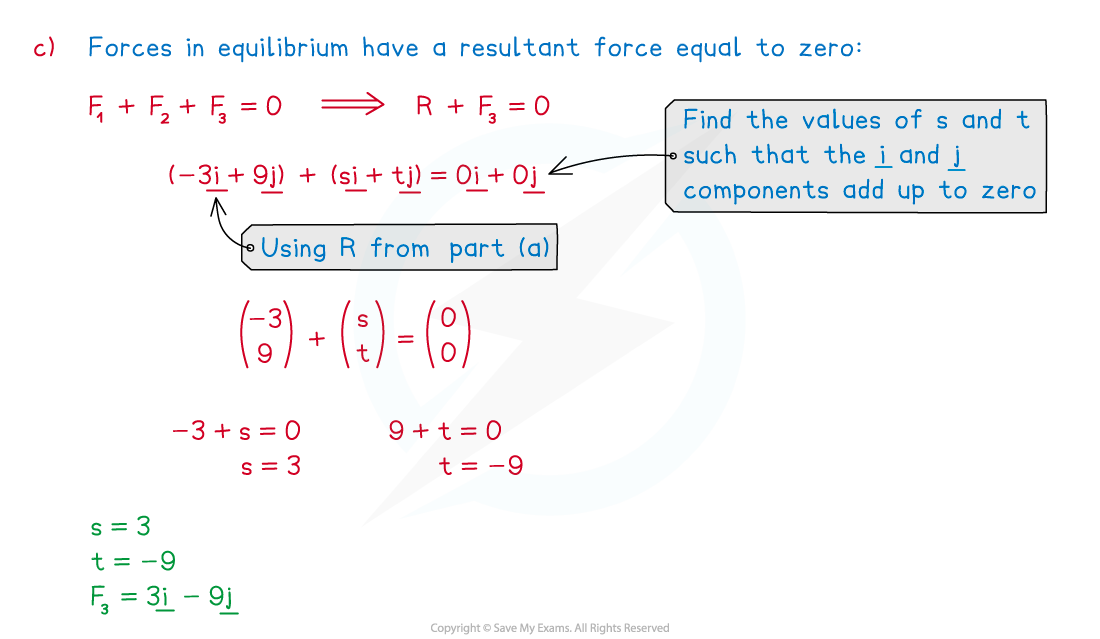Did this video help you?
Working with Vectors (OCR AS Maths: Mechanics)
Revision Note
Working with Vectors
Vectors are used throughout mechanics to describe forces and motion
How are Vectors used in Mechanics?
- Vector questions are often embedded in a Mechanics context
- Vectors will most commonly represent forces, accelerations or velocities, they can also represent displacement
- Newton’s Second Law
is essential
- Remember that
and
(force and acceleration) are vectors, while
(mass) is a scalar
- Remember that
- When a particle is in equilibrium, the vector sum of the forces on it is equal to zero
What is vector notation?
- There are two vector notations used in A level mathematics:
- Column vectors: This is one number written above the other enclosed in brackets,
e.g. The (column) vector meaning 3 units in the positive horizontal (x) direction (i.e., right) and 2 units in the negative vertical (y ) direction (i.e., down) can be written as:
-
- i and j notation: i and j are unit vectors (they have magnitude 1) in the positive horizontal and positive vertical directions respectively
e.g. The vector (-4i + 3j) would mean 4 units in the negative horizontal (x) direction (i.e. left) and 3 units in the positive vertical (y) direction (i.e. up)
- As they are vectors, i and j are displayed in bold in textbooks and online but in handwriting they would be underlined (i and j)
Calculating Resultant Vectors:
- Both column vectors and i, j notation can be used for calculating resultant vectors
- Adding vectors together gives the resultant vector
- This is the same when adding force vectors; the resultant force is simply the force vectors added together
- Forces in equilibrium have a resultant force equal to zero

Calculating Magnitude and Direction:
- Pythagoras is used to find the magnitude of a vector.
- Trigonometry is used to find the direction of a vector
- You may be asked for the direction as a bearing. The unit vector j can be used to represent north and the unit vector i can be used to represent east.
- In the case where k > 0
- If a particle is moving north then its velocity will have a vector of kj
- if a particle A is due south of another particle B then the displacement vector from B to A will have the form -kj
- If a particle is moving east then its velocity will have a vector of ki
- if a particle A is due west of another particle B then the displacement vector from B to A will have the form -ki
- If the position vectors of two particles have the same j component, then the particle with the greater i component will be positioned due east of the other
- If the position vector of a particle has equal i and j components then it is positioned due north - east of the origin
- if a particle A is north – east of another particle B then the displacement vector from B to A will have equal i and j components
- In the case where k > 0

Resolving Vectors:
- Resolving a vector means writing it in component form (as i and j components)
- Given the magnitude and direction of a vector you can work out its components and vice versa
Worked example

a) Find the magnitude of the resultant force R acting on the particle.
Leaving your answer as a simplified surd.

b) Find the bearing of the resultant force R.
Give your answer to the nearest degree.

A third force F3 = si – tj brings the particle into equilibrium.
c) Find s and t and state the force for F3 in terms of i and j.

Examiner Tip
- When working with vectors pay attention to accuracy, leaving magnitude in surd form or correct to 3.s.f.
- In your exam you can’t write in bold so should underline your vector notation

You've read 0 of your 5 free revision notes this week
Sign up now. It’s free!
Did this page help you?
